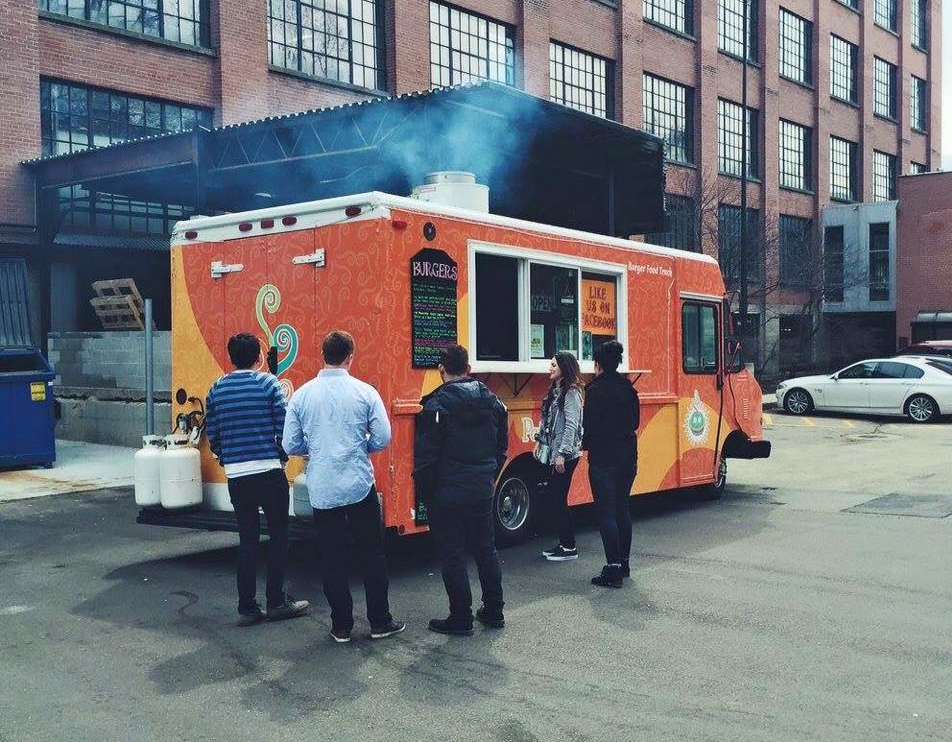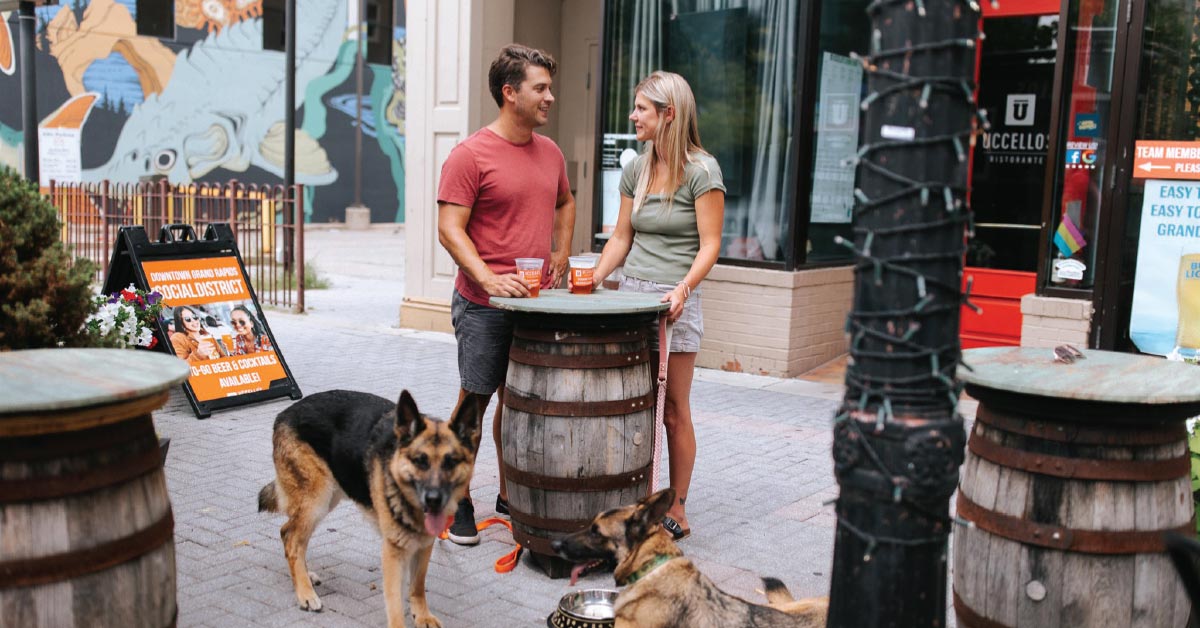During this year’s ArtPrize, downtown Grand Rapids was filled with the expected sights — oversized artwork, misused crosswalks, the guy riding a fish bicycle. But there was a surprise greeting visitors who flocked to the eighth-annual event: Food trucks. All over the place. With lines in front of them.
Grand Rapids has been notoriously slow to embrace the food truck trend, but an expanded presence at ArtPrize coincides with a push to make the city friendlier for the mobile businesses. Over the summer, the City Commission passed a long-sought ordinance to more clearly regulate food trucks and establish several public spaces where licensed operators can park and sell their cuisine.
“It was phenomenal,” said Lauren D’Angelo, who owns the Patty Matters gourmet burger truck, which spent most of the three-week competition in prime ArtPrize real estate alongside the Grand Rapids Art Museum. Over that time, D’Angelo estimates she did about $40,000 in sales.
D’Angelo opened Patty Matters in 2013 and, like most food truck proprietors who have tried to do business in Grand Rapids, encountered resistance from restaurants, prohibitive costs and impractical rules. The existing laws, adopted in 2012, allowed food trucks to operate only on private property (special events like ArtPrize notwithstanding). To do so, property owners had to purchase a $1,900 permit, which only the GRAM did.
Otherwise, food truck proprietors were required to operate with transient merchant licenses.
“It was equivalent to being an ice cream truck, which means you’re supposed to drive around and only stop when people flag you down,” D’Angelo said. “It’s not really safe to operate a food truck that way.”
Proponents have been pushing for reform for years. The GR Forward master plan, approved last year, cited food trucks as a downtown priority. Several truck proprietors earlier this year formed the Grand Rapids Food Truck Association to push for a new ordinance. Grand Rapids’ new mayor, Rosalynn Bliss, is a food truck supporter and has met with the association. A draft proposal appeared over the summer, and a final version of the ordinance — minus an earlier requirement that trucks remain 100 feet away from restaurants — was unanimously approved in August for a two-year trial run.
The new rules allow licensed vendors to operate in several downtown and near-downtown locations, including Calder Plaza, Lyon Square, Gillette Bridge (the blue pedestrian bridge) on the west bank of the Grand River, Rosa Parks Circle, Sixth Street Park, and metered parking areas on Ionia, Grandville and Commerce Avenues.
“I think in two years, we’re going to be leaps and bounds from where we are now,” said D’Angelo, who plans to run Patty Matters through the winter. “Whether the ordinance passed or not, we were going to find a way to be open year-round. Now with the new spots, and being able to park outside The Intersection and by Van Andel Arena and Grand Valley, that just gives us that much more opportunity.”
Grand Rapids has nearly 20 food trucks (almost half of which serve barbecue), and that number is likely to grow under the new ordinance. Omar Anani is originally from Kentwood, but moved to Detroit after buying a food truck about five years ago and finding Grand Rapids an inhospitable environment for it. After the new ordinance passed in Grand Rapids, Anani has decided to move back.
Anani’s flagship truck, the Twisted Mitten, has found success with a changing menu of farm-to-table (or “farm-to-street”) cuisine and Mediterranean options such as falafel and shawarma. The Twisted Mitten was twice named best food truck in Detroit by WDIV-TV. He now runs a small fleet of trucks serving Asian fusion, gourmet ice cream and halal barbecue that has become popular among metro Detroit’s large Arab American community.
But when Anani returned to Grand Rapids, he didn’t exactly get the red-carpet treatment, he said. ArtPrize, not the city, decides where to put the trucks during the event, and Anani did not get a high-foot-traffic location.
“Instead of putting me in Rosa Parks Circle with the other trucks, I was in Calder Plaza,” he said. “The first day I did $50. I operated at about a $1,000 per week loss. I sent my employees back to Detroit.”
After a slow week on Calder Plaza, he moved to a few other spots, but said restaurants complained he was too close. “The silver lining is a lot of people tried my food and liked it.”
Still, Anani said he was optimistic about doing business in Grand Rapids. Detroit’s food-truck scene has become saturated, he said, whereas Grand Rapids still is full of opportunity. He wants to build another fleet here and envisions partnering with local chefs on ambitious concepts.
“I know for a fact I can make more money in Detroit than I will here,” he said. “But I want to come home, and if I do it, I want to do it on the ground floor like I did in Detroit. I hope everything goes well and I can continue working here.”





